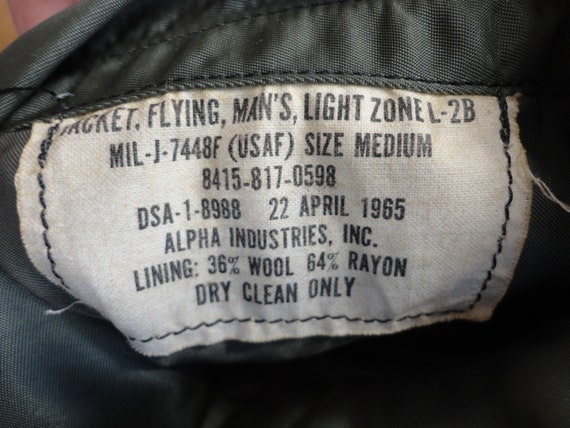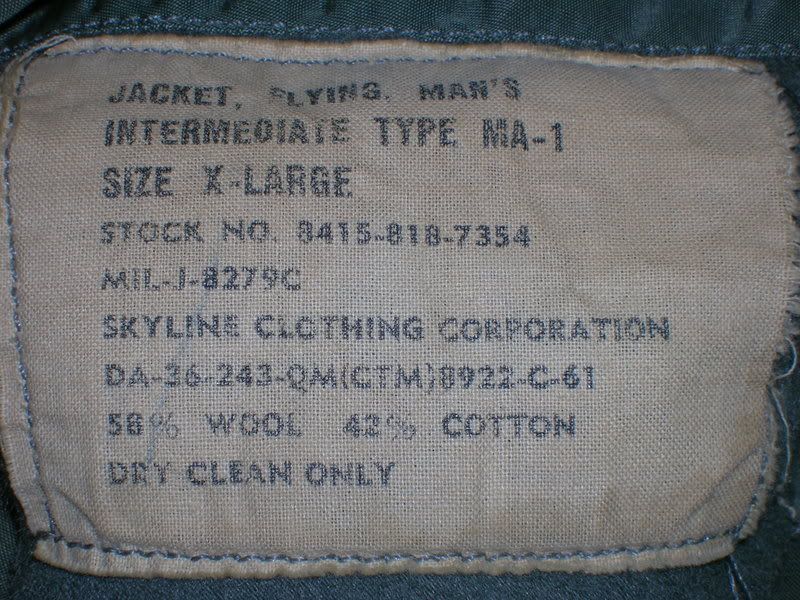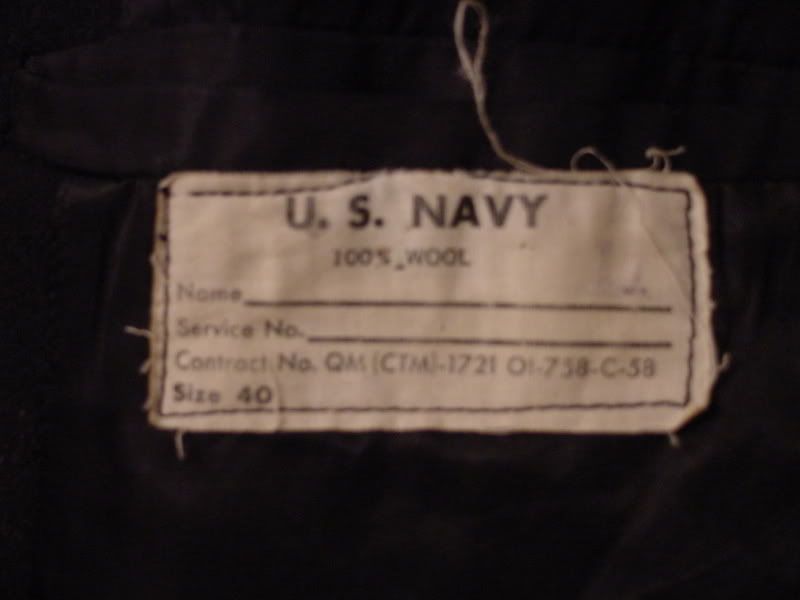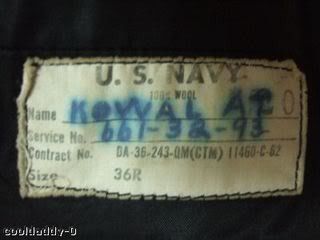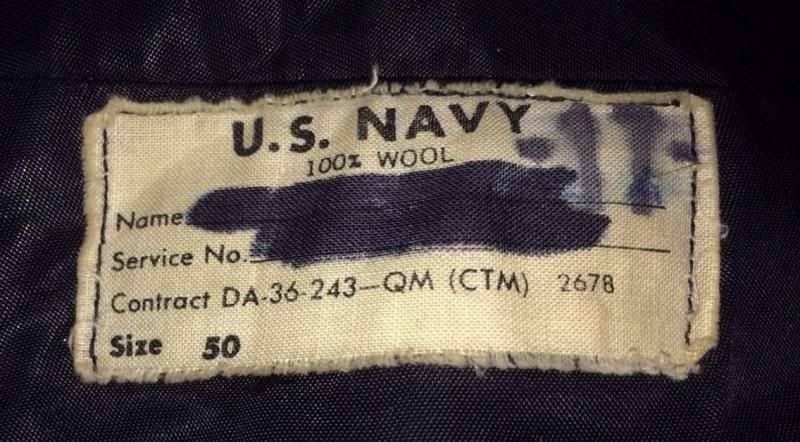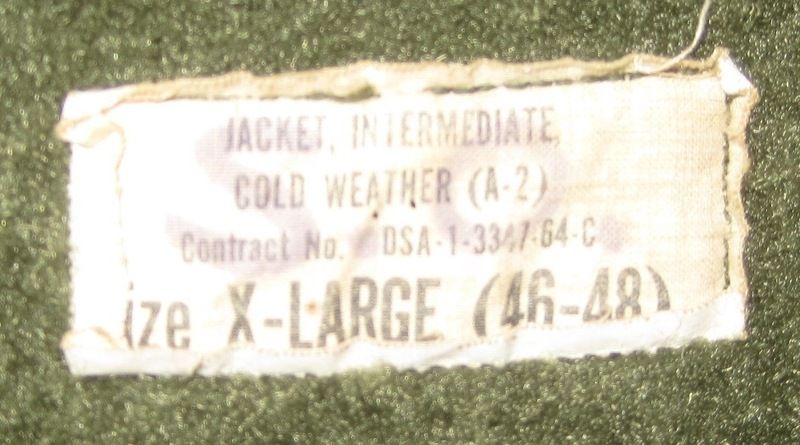Atticus
Well-Known Member
I love stumbling across deals. I don't buy much outerwear nowadays, but last night I was prowling eBay and found this rare bird. Its a 1965 peacoat in big-boy size 50...only the second such peacoat I've ever seen. One can occasionally find modern Sterlingwear jackets in size 50, but pre-1967 peacoats in size 48 or 50 are damned uncommon.
There was a $55 BIN and a half dozen watchers. I figured something must be wrong with the jacket. A rip? A paint stain? Moth damage? But after looking it over and reading the description twice, I couldn't find any red flags. I couldn't figure out what the hell the watchers were watching for, so I hit the button.
Not sure how much interest in peacoats there is on this board, but, like G-1s, the older ones fetch steep prices...especially in the larger sizes. And like G-1s, older peacoats are of a much higher quality than the newly issued ones. Sometime in the late sixties, peacoats began being made from a lighter, less dense wool and lost the corduroy lining in their pockets. They also lost the full lining in the coat, itself. Nowadays, issued peacaots are light, flimsy, half-lined shadows of their pre-Vietnam forefathers. They remind me of the stiff, cowhide, dynal collared G-1s that are shadows of C-series and older jackets.
Here's two of the seller's photos.

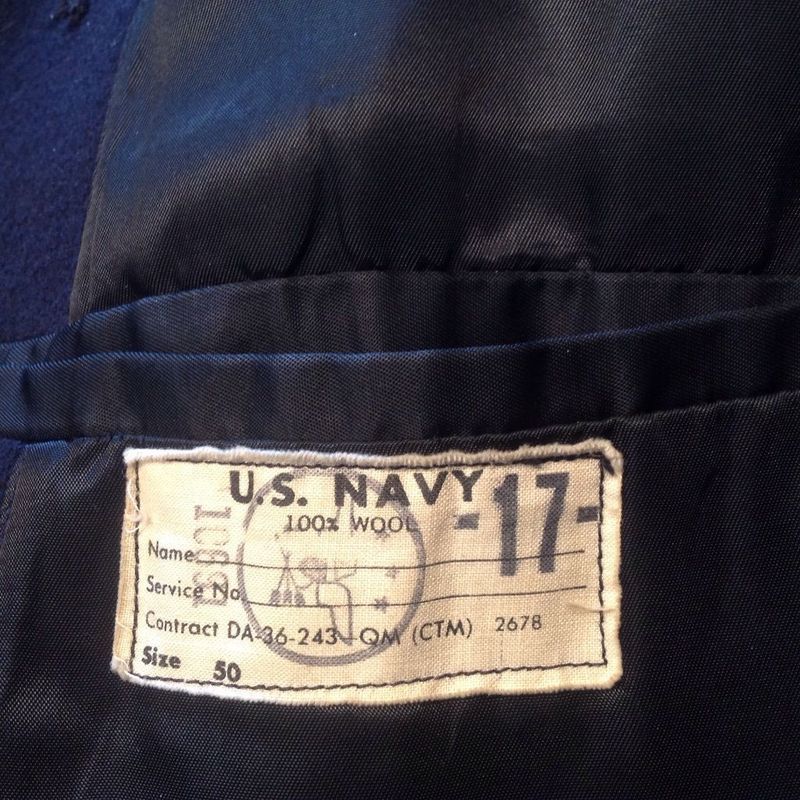
AF
There was a $55 BIN and a half dozen watchers. I figured something must be wrong with the jacket. A rip? A paint stain? Moth damage? But after looking it over and reading the description twice, I couldn't find any red flags. I couldn't figure out what the hell the watchers were watching for, so I hit the button.
Not sure how much interest in peacoats there is on this board, but, like G-1s, the older ones fetch steep prices...especially in the larger sizes. And like G-1s, older peacoats are of a much higher quality than the newly issued ones. Sometime in the late sixties, peacoats began being made from a lighter, less dense wool and lost the corduroy lining in their pockets. They also lost the full lining in the coat, itself. Nowadays, issued peacaots are light, flimsy, half-lined shadows of their pre-Vietnam forefathers. They remind me of the stiff, cowhide, dynal collared G-1s that are shadows of C-series and older jackets.
Here's two of the seller's photos.


AF

